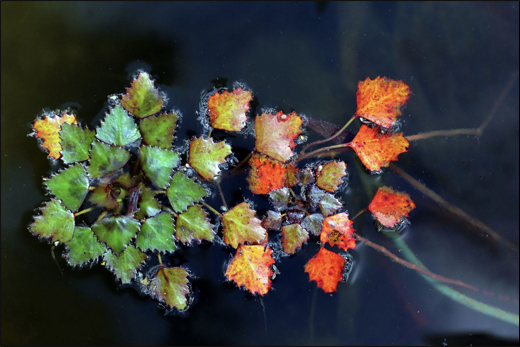Water Caltrops/ Water Chestnut/ Trapa bispinosa Roxb. – Ayurvedic Properties, Uses, Health Benefits & Dosage
Abstract
Trapa bispinosa Roxb., commonly known as water chestnut, is an aquatic plant widely used in Ayurveda and traditional medicine. Known for its nutritional and therapeutic benefits, it is rich in bioactive compounds and is used to manage various health conditions. This article explores the botanical details, Ayurvedic classification, habitat, morphology, therapeutic properties and uses of Trapa bispinosa, along with its home remedies and dosage guidelines.

Introduction
Shringataka (Trapa bispinosa Roxb.), commonly known as water chestnut, is a well-known Ayurvedic herb recognised for its diverse therapeutic applications. It is traditionally used in the management of various health conditions such as bleeding disorders, urinary tract issues, and fluid retention. Specifically, it helps control excessive bleeding due to its hemostatic properties, while its cooling and astringent nature makes it effective in treating dysuria (painful urination) and polyuria (frequent urination). Additionally, it is beneficial in reducing oedema (swelling caused by fluid accumulation) due to its mild diuretic action. Apart from its medicinal uses, Shringataka is also valued as a natural nutritional supplement, being rich in starch, minerals and essential nutrients that help restore strength and vitality, especially during periods of convalescence or general debility.
Scientific Classification
- Kingdom – Plantae
- Clade – Angiosperms
- Clade – Eudicots
- Order – Myrtales
- Family – Lythraceae
- Genus – Trapa
- Species – T. bispinosa Roxb.
Synonyms
- Trikonaphala – The fruit has a triangular appearance
- Jalaphala, Paniyaphala – Grows in aquatic environments
- Shringataka – The fruit bears horn-like projections
Vernacular Names
- Hindi name – Singhada, Singhara, Singhora
- English name – Water Chestnut, Caltrops
- Bengali name – Paaniphala
- Gujarati name – Sheengoda
- Tamil name – Singheda
- Telugu name – Patigadda
- Marathi – Shingada
- Kannada – Neerphala
- Malayalam name – Karimapolam
Habitat
Trapa bispinosa Roxb. is indigenous to India and thrives abundantly in the freshwater lakes of regions such as Kashmir, Odisha, Assam, and other parts of the country. It is also cultivated as an ornamental aquatic plant in the lakes of various European nations. This aquatic herb features long, slender stems that anchor into the muddy beds of lakes. The most commonly consumed parts of the plant are its fruits and seeds, which are both edible and nutritious.
Morphology
Trapa bispinosa Roxb. is an aquatic floating herb characterised by submerged roots that anchor it to the lakebed. Its stem is ascending in water, with the submerged portions bearing numerous pairs of green, finely divided roots that resemble spreading, pectinate structures. The leaves are simple, alternate and densely clustered at the upper part of the stem. They have a triangular shape at the apex and are entirely at the base. The plant produces a few axillary flowers that are white in colour and bloom just above the water’s surface. The fruits are obovoid, hard and angular, featuring a short, conical beak at the centre of the apex. Inside, the seed is white and starchy, making it edible and nutritious. This unique morphology allows the plant to float while remaining securely rooted in freshwater environments.
Classical Categorisation
According to Bhavprakash Nighantu – Amradi Phala Varga
According to Raj Nighantu – Mulakadi Varga
Ancient Verses
शृङ्गाटकं हिमं स्वादु गुरु वृष्यं कषायकम् ।
ग्राही शुक्रानिलश्लेष्मप्रदं पित्तास्त्रदाहनुत् ॥
(Bhavprakash Nighantu Amradi Phala varga 93)
According to the above shloka, Shringataka has cold potency, astringent taste and heavy properties. It contains Aphrodisiac, enhances taste, has absorbent properties and helps in the management of Pitta dosha, bleeding disorders and burning sensation.
Ayurvedic Properties
- Taste (Rasa) – Astringent (Kashaya)
- Physical property (Guna) – Heavy (Guru)
- Potency (Veerya) – Cold Potency (Sheet)
- Post-digestion effect (Vipaka) – Sweet (Madhur)
- Effect on tridosha – Balance Pitta dosha
Therapeutic Properties
- Vrushya – Aphrodisiac
- Grahi – Absorbent
- Shukraprada – Improves sperm count and quality
- Anila Shleshmaprada – Increases Vata and Kapha
- Pittasra / Raktapitta – Helps manage bleeding disorders
- Daha – Relieves burning sensations
- Cooling (Sheetala)
- Nutritive (Balya)
- Astringent (Kashaya)
- Rejuvenating (Rasayana)
- Diuretic (Mutrala)
- Hemostatic (Raktasthambhaka)
- Anti-inflammatory (Shothahara)
Systemic Actions
External
Its paste can be used to manage a burning sensation.
Internal Uses
- Nervous System – Enhances intellect and soothes the nervous system; useful in conditions like nerve weakness, fainting spells, and stress-induced insomnia.
- Digestive System – Acts as an absorbent; beneficial in malabsorption, excessive thirst, and related digestive issues.
- Circulatory System – Possesses styptic action; indicated in managing various bleeding disorders.
- Excretory System – Promotes urination; helpful in relieving dysuria and urinary discomfort.
- Reproductive System – Supports pregnancy retention; serves as an aphrodisiac, effective in low sperm count and reproductive debility.
- Satmikarana – Strengthens the body; recommended in cases of fatigue and general debility.
- Tapakrama – Useful in managing fevers accompanied by a burning sensation.
Chemical Composition
- Proteins
- Fats
- Starch (comprising 15% amylose and 85% amylopectin)
- Phosphorus
- Sulfur
- Calcium
- Sodium
- Magnesium
- Iron
- Potassium
- Citric acid
- Tannins
- Flavonoids
- Saponins
Modern Overview
Antimicrobial Activity
Trapa bispinosa has demonstrated potential as an effective antimicrobial agent. Studies evaluating the antifungal properties of fruit extracts from various water chestnut varieties revealed that both ethanol and petroleum ether extracts exhibited strong antifungal activity. These extracts produced significant zones of inhibition against the tested fungal strains, surpassing the effects of the standard fungicide dithane-M and the control group. Additionally, it was observed that the wild variety of water chestnut showed superior antifungal efficacy when compared to the red and green cultivated varieties of the same species.
Antiulcer activity
The antiulcer effects of Trapa bispinosa fruit extracts were investigated using Wistar rats. A 50% ethanolic extract was tested at two different doses through pyloric ligation and aspirin plus pyloric ligation models. The extract demonstrated significant antiulcer activity, which is likely attributed to an increase in total carbohydrate content and modifications in the stomach’s mucosal barrier. These findings suggest that the ethanolic fruit extract of Trapa bispinosa possesses promising antiulcer properties.
Practical Uses
- The flour made from dried fruit/kernels of Trapa bispinosa is commonly used in breakfast recipes across India.
- Powdered dried kernels of Shringataka are administered to control bleeding and to manage polyuria and oedema.
- The fruit and seeds, eaten raw or cooked, help alleviate burning sensations, quench thirst, and support urine retention.
- Powder from the fruits and seeds serves as a nutritional supplement to combat muscle weakness and enhance body strength.
- Regular use of the fruit powder is believed to improve sexual potency.
- Shringataka fruit powder is also given to women experiencing threatened abortion to provide support.
Part Used
- Fruit pulp
- Fruit powder
- Seeds
Dosage
Powder – 5-10 gm
Conclusion
Trapa bispinosa Roxb., or water chestnut, is a nutritionally rich and medicinally valuable aquatic plant recognised in Ayurveda for its multifaceted therapeutic effects. Its role as a natural remedy in digestive, urinary and reproductive health makes it a vital component of traditional medicine. With its wide availability and minimal side effects, Trapa bispinosa continues to be a trusted natural remedy for promoting health and well-being.



